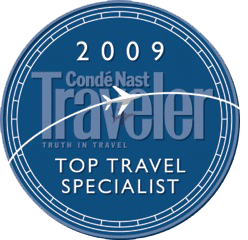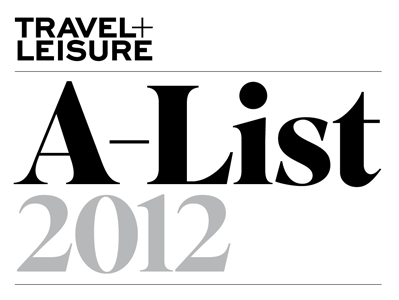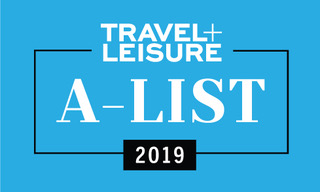After 17 months of repair work, the famed Trevi Fountain will finally be unveiled this month in Rome. Nearly 2.2 million Euro (2.98 million dollars) was spent by Fendi, the company funding the restoration project. That’s a lot of coins to throw into a fountain!
Subscribe to this list via RSS
Blog posts tagged in italy travel planning
Italy is a country where people still talk face to face, are not glued all day to their cell phones, and are more concerned with the quality of their food than the quality of their broadband internet. It is anything but high tech. However, there have been a number of recent efforts to usher in high tech solutions to various problems, benefitting citizens, the environment, and upping Italy’s less than stellar tech savvy.
If you’ve been to Italy, you’re no doubt already acquainted with the simultaneously charming and confusing fact that greetings in Italy vary so widely by time of day and relationship that you might find yourself hearing over a dozen variations in one day!
Italians do not expect foreigners to have these down perfectly, of course, but they will be highly impressed if you get them spot on. It’s a great way to start a relationship, whether with your tour guide, a shop keeper, or hotel concierge, even if the conversation continues in English.
Italian has an entirely separate pronoun for the second person (you) when you want to be formal (Lei) than when you want to be casual (tu). So it makes sense that one of the biggest dividing lines between Italian greetings is the level of formality.
When you are meeting for the first time, the person is in a position of authority, or it is a one-off conversation like you may have trying to buy a train ticket, you should always stick a formal greeting.
The easiest formal greeting, which you can use at any time of day or in any situation is “salve,” which translates roughly as something akin to “salutations,” even though that is very old-fashioned and out of use in English today.
“Salve” can be a tad to formal for many situations, so the best thing to do is learn the different “good day”-style greetings for each time of day:
The ubiquitous “ciao,” which has now extended past Italian boarders not only to occasional appearances in the U.S., but also a common role in German, Spanish, and other European conversations, is best reserved for friends and closer aquaintances.
Even in those cases, however, it’s usually followed with some variety of how are you:
Italians do not expect foreigners to have these down perfectly, of course, but they will be highly impressed if you get them spot on. It’s a great way to start a relationship, whether with your tour guide, a shop keeper, or hotel concierge, even if the conversation continues in English.
Formality First: Formal Italian Greetings
Italian has an entirely separate pronoun for the second person (you) when you want to be formal (Lei) than when you want to be casual (tu). So it makes sense that one of the biggest dividing lines between Italian greetings is the level of formality.
When you are meeting for the first time, the person is in a position of authority, or it is a one-off conversation like you may have trying to buy a train ticket, you should always stick a formal greeting.
The easiest formal greeting, which you can use at any time of day or in any situation is “salve,” which translates roughly as something akin to “salutations,” even though that is very old-fashioned and out of use in English today.
“Salve” can be a tad to formal for many situations, so the best thing to do is learn the different “good day”-style greetings for each time of day:
- “buongiorno” can be used from morning until after lunch
- “buona sera,” which literally means “good evening,” can be used all afternoon and evening, though in some areas, it is more correct to say “buon pomeriggio” (literally good afternoon) until dinner time
”How’s it going?” And Other Casual Greetings
The ubiquitous “ciao,” which has now extended past Italian boarders not only to occasional appearances in the U.S., but also a common role in German, Spanish, and other European conversations, is best reserved for friends and closer aquaintances.
Even in those cases, however, it’s usually followed with some variety of how are you:
- “come sta?” (formal)
- “come stai?” (informal)
- “come va?” (very informal)
When you think of different types of dining establishments, most fall into one of two categories-sit down or take out, fine dining or casual, restaurants in cafes.
But in Italy, they seem to have a dizzying number of names for places that, ostensibly, all seem like sit down restaurants: trattoria, ristorante, osteria, enoteca, and the list goes on.
When you're out in Italy, how do you know what you're getting? There are basically five grades of sit-down restaurant, two types of wine bars, and two main types of take-out place.
But in Italy, they seem to have a dizzying number of names for places that, ostensibly, all seem like sit down restaurants: trattoria, ristorante, osteria, enoteca, and the list goes on.
When you're out in Italy, how do you know what you're getting? There are basically five grades of sit-down restaurant, two types of wine bars, and two main types of take-out place.
Sit-Down Restaurants:
- Ristorante - This is the top grade of Italian dining establishments, with conscientious service, fine dining plating and dishes, and often a well-known chef.
- Trattoria - Trattorias are wonderful casual places to eat, whether for a pre-set lunch menu or a dinner out. They focus on typical Italian fare, without the fusion flare you may see in ristorantes.
- Osteria - Osterias are much like trattorias, but a bit more casual with a focus on regional specialties.
- Tavola Calda - In a tavola calda, there is typically no table service. You choose your food from a cafeteria style serving set up. These are primarily in Florence.
- Pizzeria - In Italy, pizzarias are sit-down restaurants that predominantly serve pizza with wine, a variety of salads, and a few pasta selections.
Wine bars:
- Enoteca - For a more formal wine tasting experience in line with American wine bars, head to an enoteca. Today, many are high-design and high-tech, though the food options are typically limited.
- Taverna - Tavernas are more old-fashioned, like an Italian version of a British pub, with wine instead of beer. Food is very traditional, simple fare.
Take-out:
- Pizza a taglio - For a slice of pizza on the run, look for a pizza a taglio (literally: by the slice). There may be limited seating, but squares of pizza, calzones, and occasionally some desserts are packaged up to take away.
- Rosticceria - Unlike pizza a taglio places, which expect people to be eating their food on the go, rosticcerias typically serve hot food, primarily meat and roast vegetable dishes, to take and eat at home. If you're looking for an entire chicken, this is the place.






















